
Explore Puerto Rico
Cocktails & Drinks
Puerto Rican cocktails and drinks will have you feeling like you're on a tropical island sipping by the beach!
Puerto Rican drinks are well known to many people because it’s refreshing and delicious. There’s no better way to relax in Puerto Rico than having a special island cocktail beside you. Apart from cocktails and drinks, Puerto Rico’s rum and tequila-based mixed drinks are also ideal to suite relaxation on a cool evening.
The Island’s cocktail scene has evolved with equal care. Puerto Rico is the birthplace of the piña colada, and you’ll find that an innovative approach to refreshing drinks continues to this day. Whether it’s one of the world’s top bars in Old San Juan, a brewery tour, a tasting of local rums, or just a poolside cocktail, you’ll find plenty to enjoy there.
At almost every restaurant, you’ll find classic fruity drinks, including piña coladas and painkillers which can be perfect for a day on the water. The drinks are endless and so are the restaurants and bars, which can make it hard to choose.
Traditional Drinks With Alcohol
Puerto Rico is famous for its rum, so it should not be a surprise to see many the drinks utilize this Caribbean special alcohol. The island has various Caribbean drinking recipes and cocktails that will surely satisfy your next vacation.
Pitorro
Also known as ron caña (cane rum), this is your basic illegal distilled moonshine, made from sugarcane. Straight pitorro is just as strong as any other moonshine you may have tasted, with alcohol levels into the 120 proof or more. This is not your average, by the numbers alcohol.
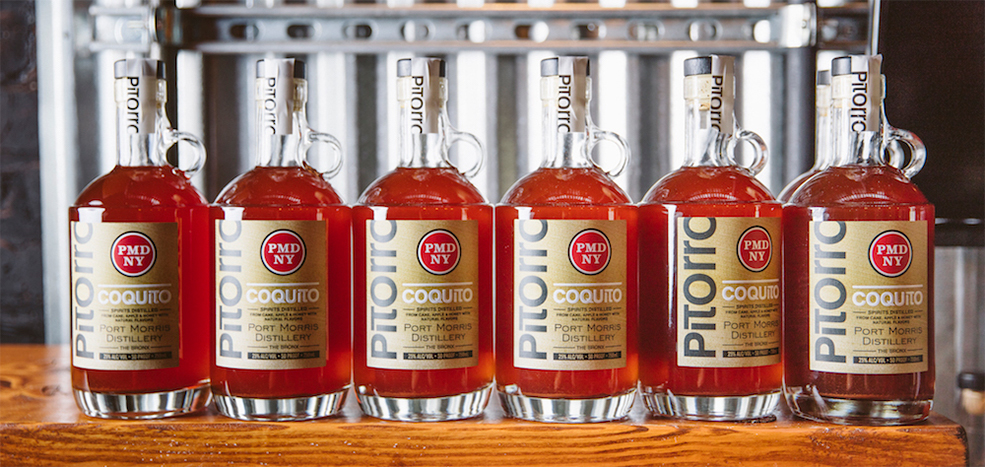
If you have the opportunity to try a “cured” or flavored pitorro, you are in for a treat. Typical fruit flavors include coconut, pineapple, tamarind, papaya, strawberry and mango. Other flavors include coffee and chocolate.
The curing process occurs when sugar and flavors are added to pitorro, diminishing the intensity of the pitorro alcohol flavor. Pitorro may be buried underground to accelerate the “curing” process to integrate the added flavors. Since it is illegal, the only way to get your hands on some is to have local friends track it down.
Bilí (Fermented Rum With Quenepas)
Bilí originated from a small island of Puerto Rico called Vieques. The main highlight of Bilí is the quenepa, which is often abundant in the summer. Quenepa is a type of small limes that grows on the Spanish lime tree (another name is mamoncillo trees).
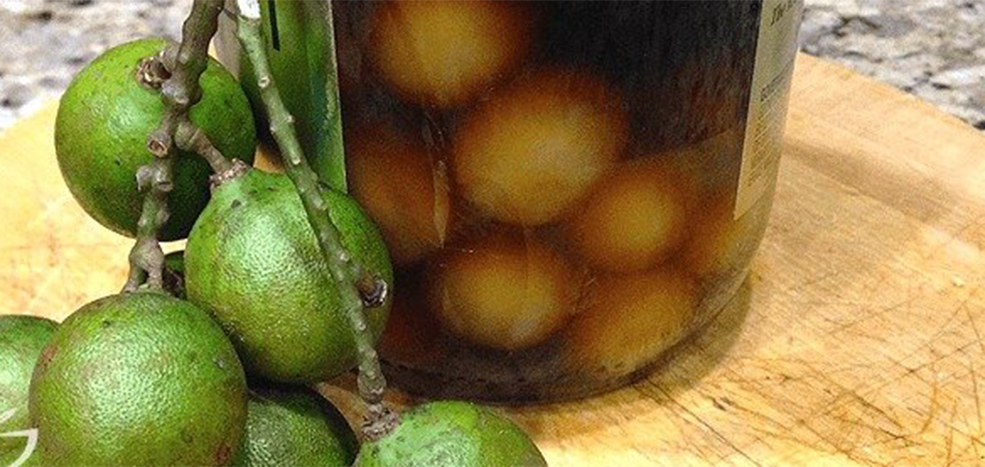
Bilí (Fermented Rum With Quenepas)
The drink is sweet, delicious, and people find it to be a great Caribbean appetizer for a drinking party. To make Bilí, the locals use rum, cinnamon, and brown sugar to create the mixture’s base. It then will be left fermented for around a month in a dark place.
Medalla Light Beer
Picture yourself lying on a beach in Puerto Rico with a cold bottle of light beer cracked open. It sounds amazing, right? There’s a huge chance that you will enjoy the Medalla light beer when you’re in Puerto Rico. As the only mass-produced type of beer in Puerto Rico, Medalla is a lager-style beer mainly brewed in Mayagüez. The beer has already established itself in the US as one of the favorite American drinks.
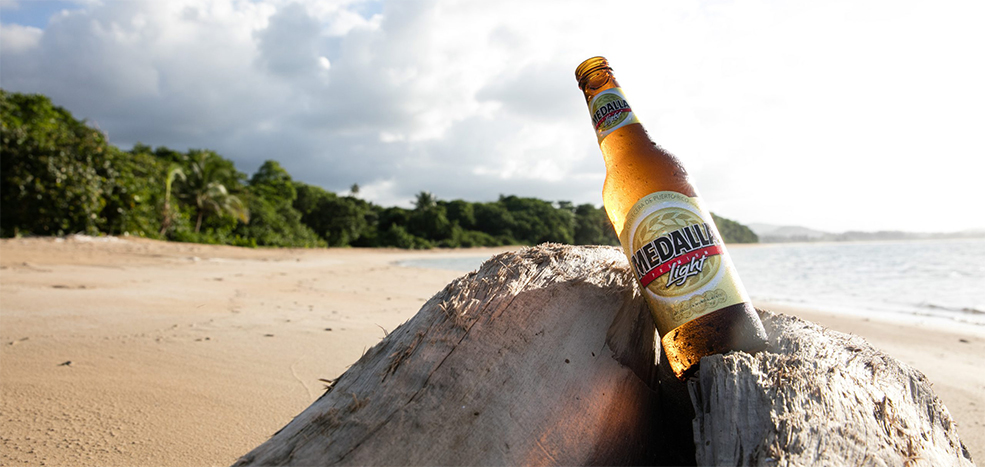
This is the only mass-produced beer in Puerto Rico and comes in one version only: Light. For this reason the lager-style beer, produced in the western city of Mayaguez, is simply known as Medalla. Medalla will taste like carbonated water and have a bit of sweetness on your tongue. However, the signature flavor of Medalla light beer is its malty flavor.
Don Q (Puerto Rican Rum)
Perhaps you’re looking to enjoy a purer form of Puerto Rican alcohol. Then Don Q is the perfect option for you. It is famous amongst locals to use in a variety of cocktails thanks to the complex and strong flavor. You will find Don Q appear in many Puerto Rican recipes for drinks.
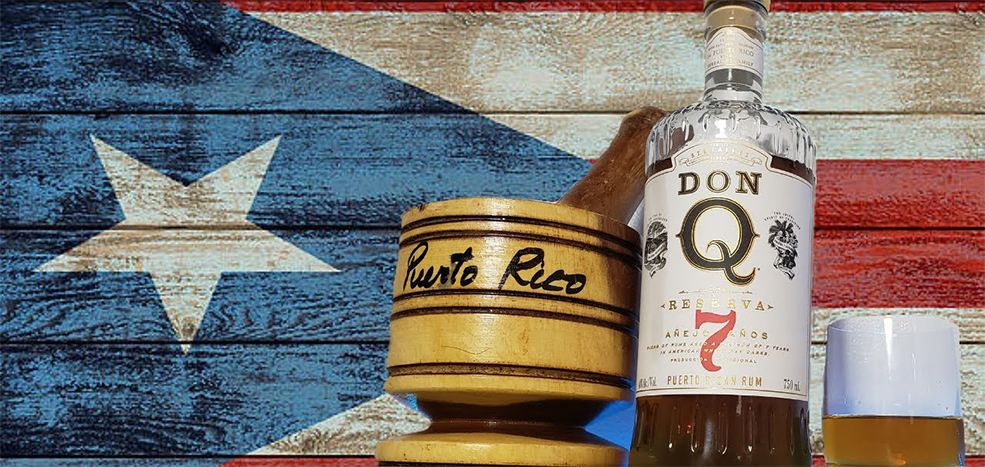
Don Q (Puerto Rican Rum)
People list Don Q as amber rum, distinct by its gold color and transparency. Don Q is made in the Destilería Serrallés in Ponce and often aged more than 3 years before serving the public. Don Q is famous around the world in Puerto Rico, so it should be easy for you to find it at any bar, club, or liquor store.
Puerto Rican Cocktails
You can’t say that you have traveled to Puerto Rico without trying these iconic cocktails. So here are some of the most popular cocktails you can have while having a wonderful vacation on the island.
Piña Colada (Strained Pineapple)
It will be rude if you don’t mention Piña Colada when it comes to Puerto Rico. A staple drink of the nation and made famous worldwide, Piña Colada first made its world debut in 1954 when a bartender by the name of Ramón “Mochíto” Marrero in San Jose created it.

Piña Colada (Strained Pineapple)
The original Piña Colada recipe only requires 3 ingredients: pineapple juice, rum, and coconut cream. The term Piña Colada is a combination of Piña (meaning pineapple) and Colada (meaning strained). When combined, it means strained pineapple juice.
Piña Colada’s signature sign is in the pineapple wedge that is put on the rim of the glass for garnish. Also, the cocktail will frequently have whipped cream and a cherry on top for extra style. For kids who look to enjoy Piña Colada, you can remove the rum from the recipe.
After many cultures around the world adopted the cocktail, Piña Colada has variations that use different types of liquor. Your bartender will often blend or shake the cocktail with ice before serving. In the US, Piña Colada has become one of Americans’ favorite recipes for parties.
Chichaíto (A Puerto Rican Shot)
If you’re a fan of rum, then you will surely fall in love with Chichaíto. You will most commonly encounter this drink when you’re hanging in the south of Puerto Rico locals. For people who can’t handle licorice, you can add honey and lemon to reduce the licorice intensity.
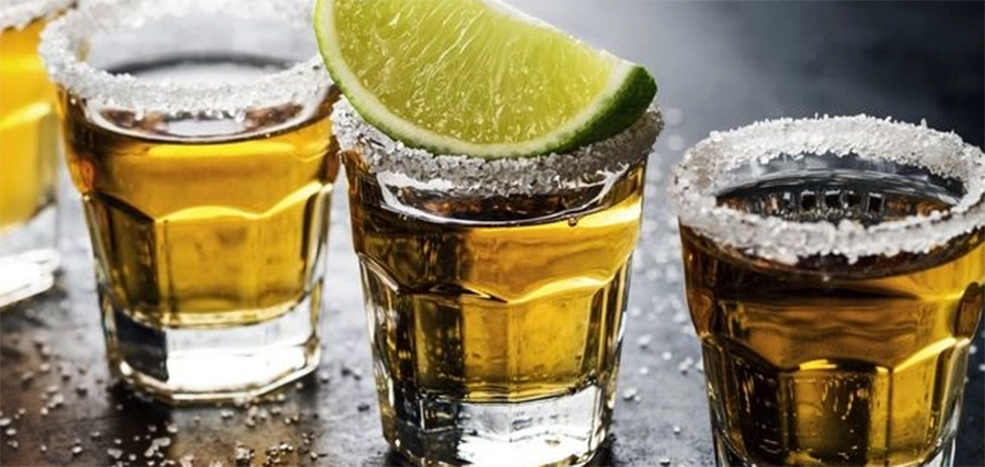
Chichaíto (A Puerto Rican Shot)
This traditional Puerto Rican recipe will require you to mix equal parts of white rum with anise-flavored liqueur. Typically, the locals will prefer using Palo Viejo rum. You will then need to shake the mixture with ice to create a sweet and smooth shot.
But don’t get carried away by the sweetness because you will soon feel the effect of the rum after a couple of shots. There are other variations of Chichaíto where you can add coconut cream (Chichaíto de Coco) or Nutella (Chichaíto de Nutella) to switch up the flavor.
Coquito (Puerto Rican Eggnog)
Although you can find this drink around the Caribbean, Puerto Rico is the home of Coquito. In Spanish, the drink’s name means “little coconut”, though the true origin of the Coquito is still up for debate. If you love eggnog from American cuisine, then Coquito will suit your taste buds.
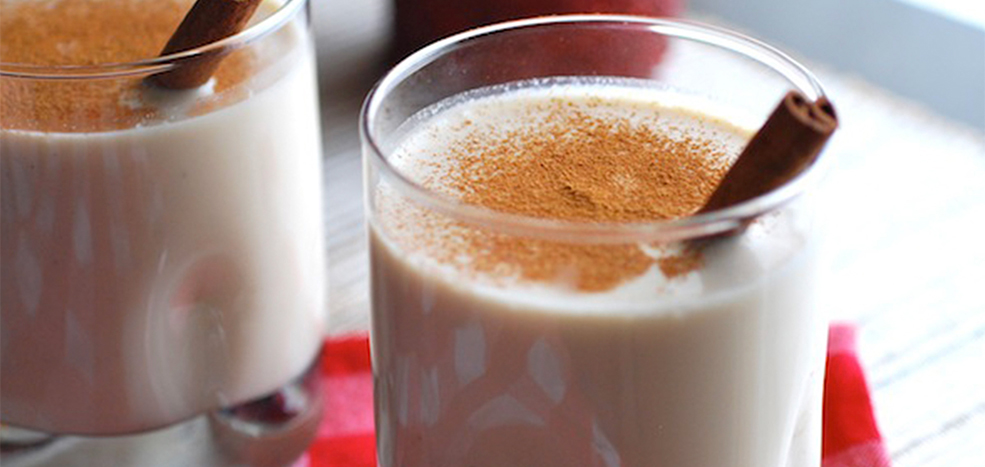
Coquito (Puerto Rican Eggnog)
Classic Coquito has 4 ingredients: coconut rum, Puerto Rican rum, coconut milk, and sweetened condensed milk. In Puerto Rico, the locals often serve Coquito in small shot glasses after dinner. Sometimes you can see locals use Pitorro to replace the rum.
People around the world describe Coquito as having some similarities to eggnog. Besides the 4 main ingredients, the locals will also add some nutmeg, vanilla, cinnamon, and clove while simmering the mixture on the stove until it becomes thickened.
If you have a chance to travel around the Caribbean area, you will see people drink Coquito during the Christmas holidays. It’s a traditional Puerto Rican dessert that dates back to the 1900s. Each family has their recipe for Coquito, and it can be used as a gift.
Chi Chi (Vodka Strained Pineapple)
People who know about Chi Chi often refer to it as a close cousin of Piña Colada since it utilizes the original recipe of the Puerto Rican staple cocktail.
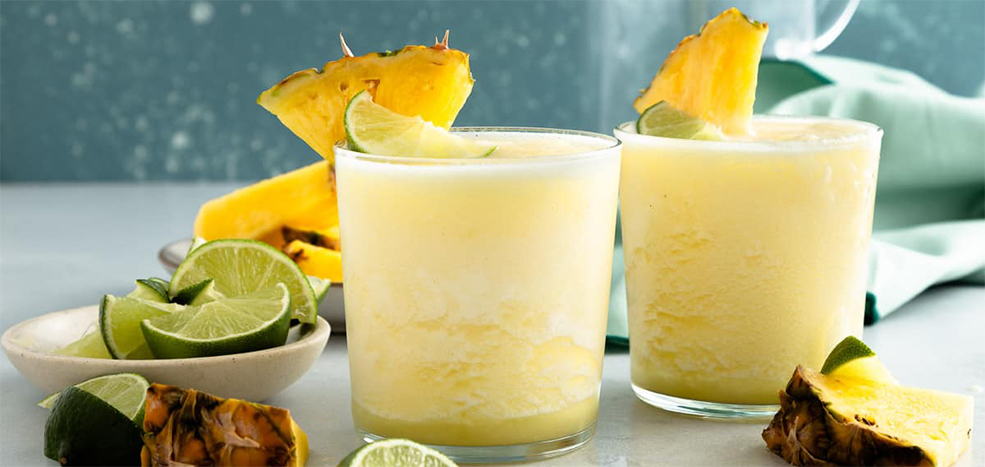
Chi Chi (Vodka Strained Pineapple)
Instead of using rum, you can mix can vodka and pineapple, coconut milk, and cream. People often serve the mixture in a hurricane or poco glass with a cherry on top as garnish. Since vodka is neutral in taste, it doesn’t overwhelm other flavors from the pineapple juice or the coconut cream. However, Chi Chi is not famous globally, and people gradually forget it.
Spiced Cherry
Are you looking for a light, refreshing cocktail at a Puerto Rican bar? Then try something new like spiced cherries. It’s really simple to make this cocktail when all you need is to mix spiced rum with cherry soda. You can get fancier by garnishing the glass with a cherry.
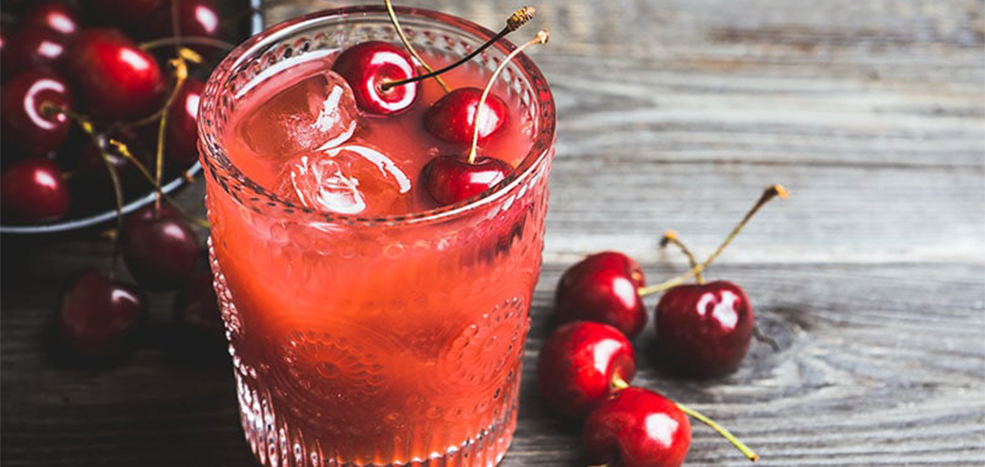
Spiced Cherry
The base of this cocktail, spiced rum, can have various flavors. This is because spiced rum is infused with different ingredients like orange peels, brown sugar, spices, molasses, caramel, and vanilla. You can order spiced cherry at different bars in the Caribbean to experience the difference in flavors.
Amaretto Colada (Amaretto Strained Pineapple)
There are many variations to the original Piña Colada recipe. Adding Amaretto to the mix of Piña Colada greatly elevates the cocktail’s flavor profile.
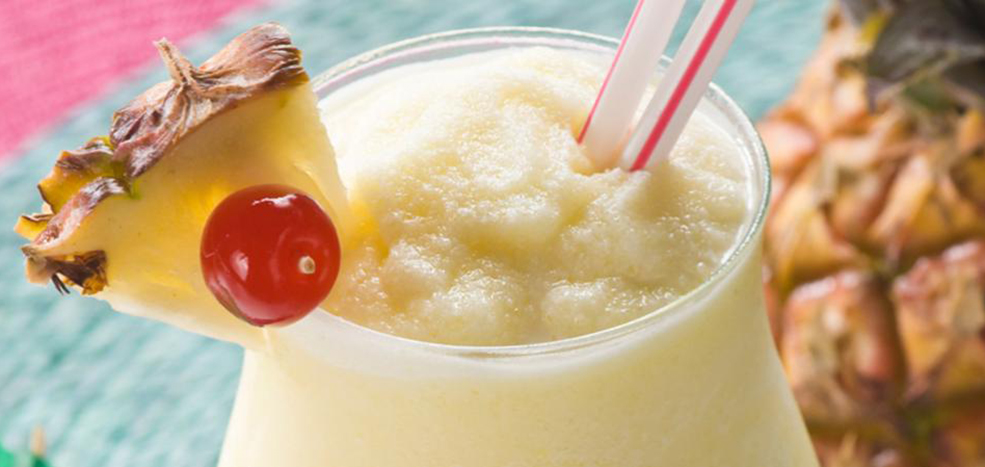
Amaretto Colada (Amaretto Strained Pineapple)
Amaretto is a liqueur made from almonds, giving the spirit a rich and nutty flavor. When mixed with coconut cream and pineapple juice, Amaretto enhances the rich taste of the Piña Colada.
Although it’s just a small twist to the Piña Colada recipe, the changes in flavor are significant. It’s better to enjoy Amaretto colada as a sophisticated drink rather than a quick shot at a party.
Cuba Libre (Free Cuba)
The direct translation of Cuba Libre is “freeing Cuba”. The drink’s origin dates back to Havana in the 1900s when the Spanish – American war ended, which led to the independence of Cuba. The drink’s purpose is to memorialize the Cuba Liberation Army battle cry.
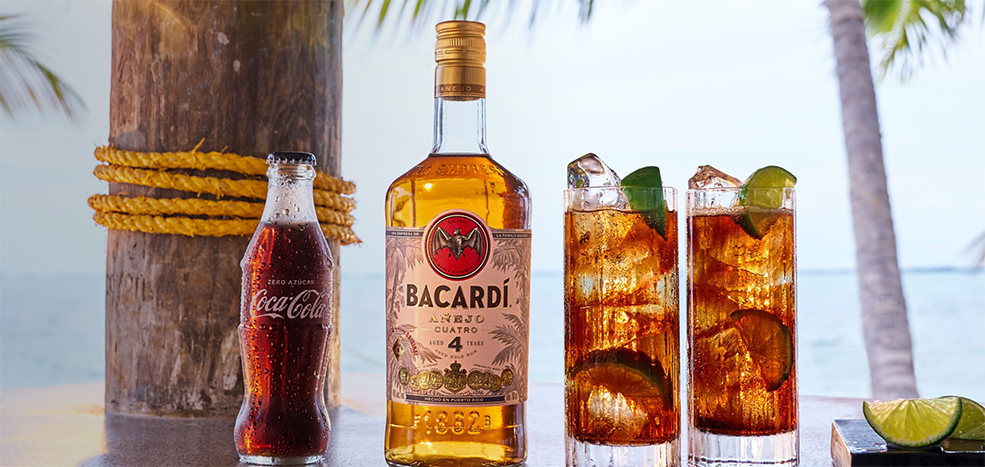
Cuba Libre (Free Cuba)
Traditionally, you can order Cuba libre without the lemon juice, or you can even add gin to the mixture for recipes in the early time. When served, Cuba libre will often have a slice of lime as a garnish on the glass’s rim.
You will find Cuba libre is easy to make since it’s just a combination of rum, coca-cola, and lime. However, the Caribbean people often use Don Q rum to be the base of the mixture.
Mojitos
A national drink of Cuba, the Mojito, was invented in Havana, although there are still many debates about its exact origin. At first, sugarcane water was in place to sweeten the Mojito instead of today’s sugar water.
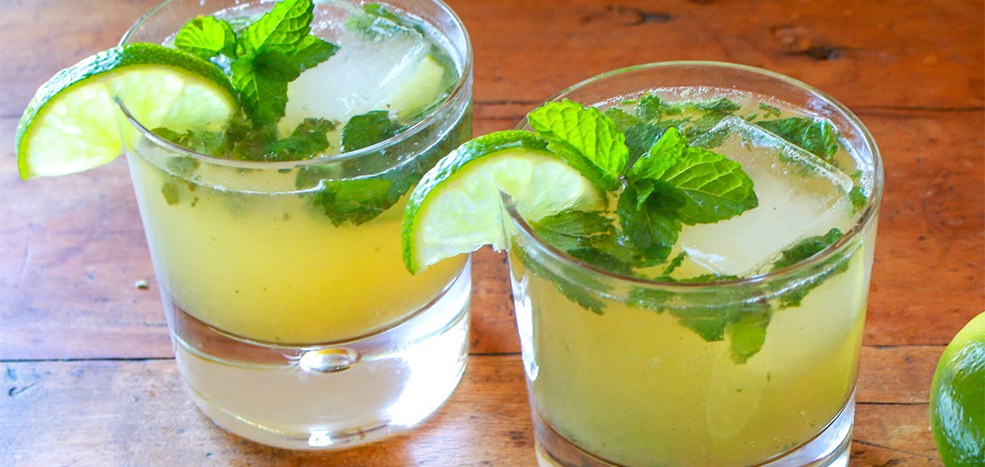
Mojitos
To prepare a traditional glass of Mojito, you will need to muddle some mint leaves so the oil can infuse with the mixed sugar water. After that, you can add lime juice, rum, and soda water to the mixture.
Mojito has a refreshing taste to help you stay fresh in the summer heat. The sweetness of sugar water, the freshness of mint, and slightly citrus flavors mix well with the sweetness of rum. It’s best to enjoy a Mojito with ice to enhance the refreshing feature of the cocktail. Mojito is often topped with chipped ice, so the glass would cool faster. You will need to pay attention to the ice since it could dilute the cocktail and ruin your experience of a good Mojito glass.
Puerto Rican Non-Alcoholic Drinks
If you’re looking for some non-alcoholic beverages to satisfy your thirst in the Caribbean, then don’t miss these famous drinks from Puerto Rico. These drinks are free from alcohol, so you and your kids can enjoy them as well.
Coco Frío (Cold Coconut Water)
If you happen to drive down the road to grab some lovely Puerto Rican street treats, there’s a high chance you will encounter some stands selling coconut water as a refreshment. Coconut water is rich in minerals and high manganese, which are essential to your body.
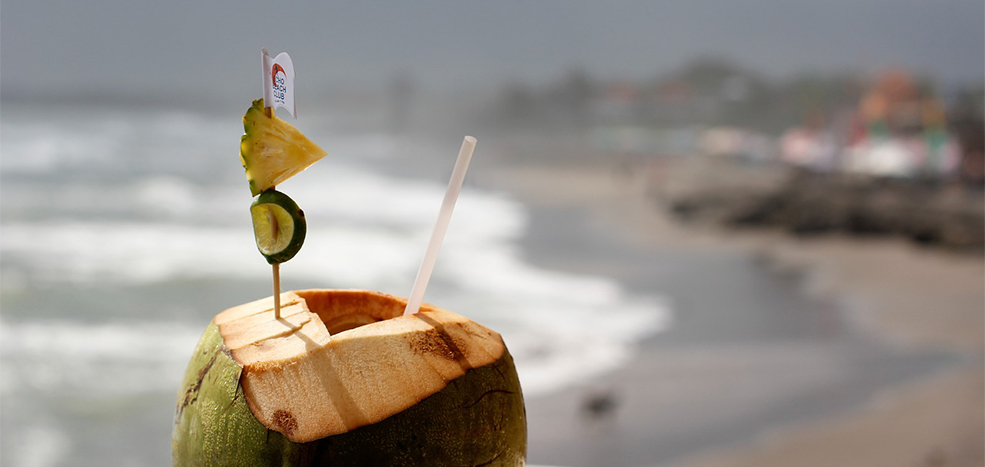
Coco Frío (Cold Coconut Water)
The vendors often offer extra alcohol like vodka, rum, or whiskey to your coconut. After finishing your coconut water, you can ask the owner at the stand to cut open the coconut so that you can eat the sweet and juicy meat.
The locals will soak green coconuts in an ice container to keep the coconut water cool and refreshing, so it’s always ready to serve. There’s nothing better than the feeling of taking some sips from a coconut while enjoying the tropical breeze blowing through you.
Limber (Puerto Rican Ice Cream)
Are you looking for a different way to freshen up yourself with something cold and slushy? Limber is the go-to food in Puerto Rico on hot summer days. It is essentially frozen tropical fruit juice. The most popular method to eat Limber is to squeeze the cup, so the ice cream pops out, and then you can start enjoying the flavorful treat.
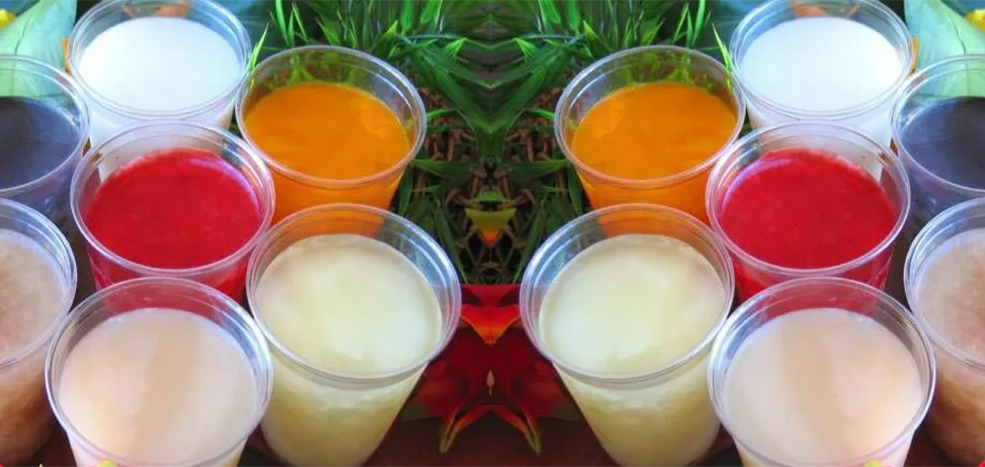
Limber (Puerto Rican Ice Cream)
Thanks to the tropical climate, Puerto Rico has an abundance of tropical fruits, making the flavors only limited by the availability of the fruits. People often sell Limber as a frozen or slushy mixture that will instantly cool you off from the tropical heat.
Kids on the island of the Caribbean love this small and sweet Caribbean dessert for its natural fruity flavor. The sweet and fruity flavors are what keep children coming back for more. It quite resembles a popsicle in the US, but it doesn’t have a popsicle stick instead.
Horchata De Ajonjolí (Sesame Seed Milk)
Horchata is a plant-based type of drink. In Puerto Rico and El Salvador, the locals use the sesame seed to create Horchata De Ajonjolí.
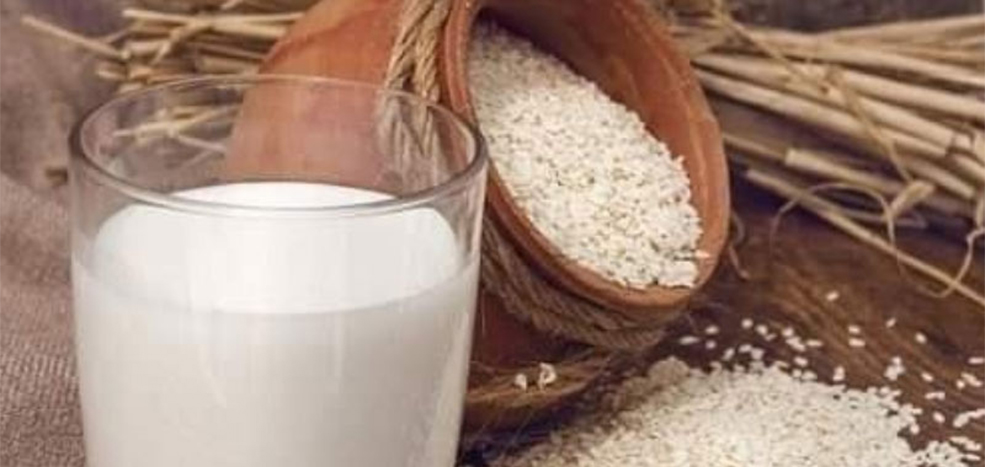
Horchata De Ajonjolí (Sesame Seed Milk)
You will first need to roast the sesame seeds, then soak them in water mixed with a bit of milk. Then other ingredients such as vanilla, clove, and cinnamon are good additions to improve the overall flavor. Finally, you will need to strain the concoction to remove any impurities.
It’s a great drink that will instantly work its magic by cooling you off. If you feel like the tropical heat is taking a toll on you, then Horchata De Ajonjolí is an enjoyable drink to let off some of that steam.
Frappé (Puerto Rican Frozen Drink)
Frappé is a blended drink with fresh fruit from the tropical area of Puerto Rico. The origin of the drink is in Greek, which saw Frappé as a blended coffee. People in the US see Frappé as a fantastic American dessert with coffee and chocolate.
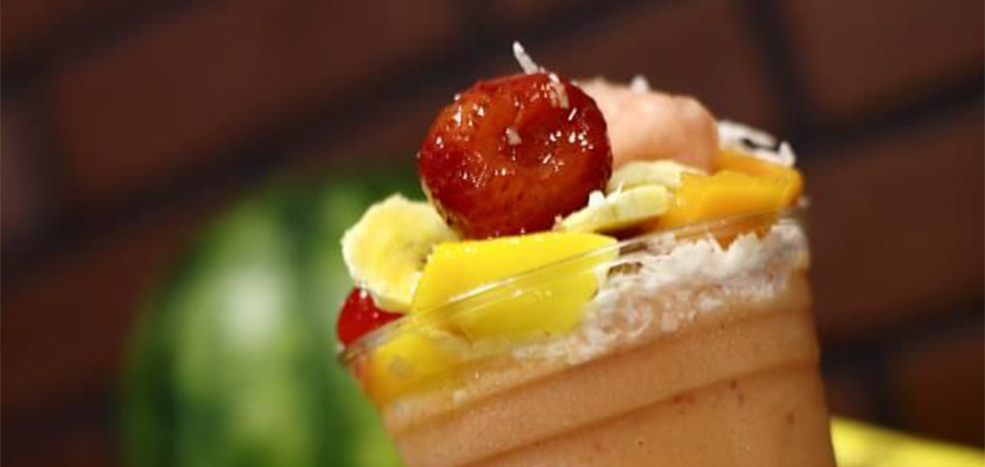
Frappé (Puerto Rican Frozen Drink)
In Puerto Rico, the locals replace coffee with ice cream for a creamier texture when blended with local fruits. Some recipes even incorporate whipped cream on top to enhance the creaminess and richness of the drink.
Thanks to the lush environment, which contains an array of fruit options, you will be able to pick out whatever fruity combinations to go with your creamy drink.
Mavi (Mavi Or Mauby Root Beer)
Mavi or Mauby is made by boiling the Mavi tree bark to extract its flavors. The mixture will proceed through a fermentation process. Sometimes, people add spices, fruit, or ginger to create different flavors.

Mavi (Mavi Or Mauby Root Beer)
Although Mavi is a non-alcoholic drink, this beverage will taste similar to beer thanks to the fermentation process of the tree bark mixture. Mavi is initially sweet and will leave a bit of bitter aftertaste.
The locals on the island often purchase Mavi as pre-made syrup and then dilute it using water, according to customers’ requests.
In other parts of the world, root beer is the official name of this drink. There’s also an alcoholic version of root beer, where people will add sugar to the fermentation process. You will often find Mavi being sold at stores around the island.
Piragua
Piragua is the Puerto Rican Spanish word for snow cone. This refreshing pyramid shaped ice treat is popular all year long. The word piragua is the result of combining the words pirámide (pyramid) and agua (water).
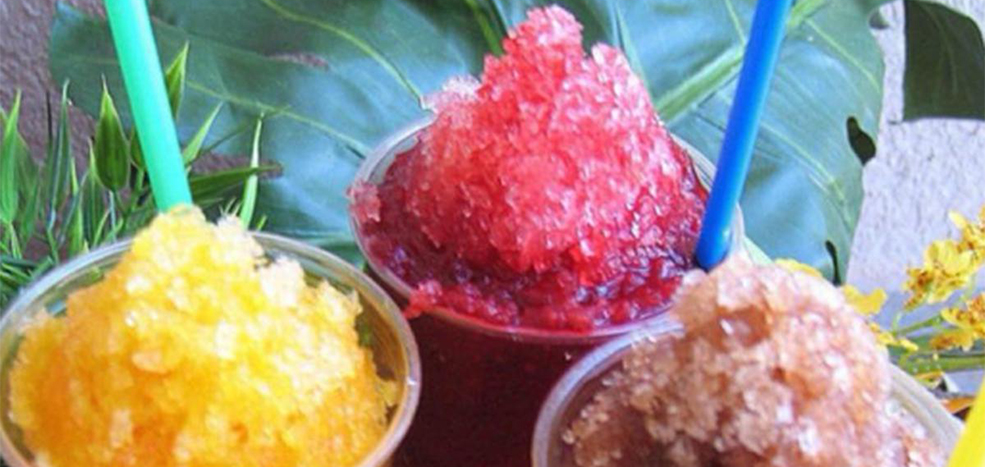
Piragua (Puerto Rican Snow Cone)
The Puerto Rican piragua is sold by piragüeros, street vendors with colorful carts covered by an umbrella. It is hand-shaved with an instrument called a cepillo, that literally means “a brush.” The shaved ice is covered with a flavored syrup of your choice, such as ajonjolí (sesame seed), anís (anise), cereza (cherry), china (orange), coco (coconut), crema (cream), frambuesa (raspberry), fresa (strawberry), limón (lemon), melao (sugar cane), melón (watermelon), parcha (passion fruit), piña (pineapple), tamarindo (tamarind) or uva (grape). You can sip the piragua using a small straw or start eating the ice right away.
Malta (Puerto Rican Carbonated Drink)
Malta is made similar to how beer is created. The drink is made from water, barley, and hops, with the addition of caramel or corn color in some areas to give Malta a yellow-ish color like beer. However, the drink is only considered a carbonated drink and contains no alcohol.
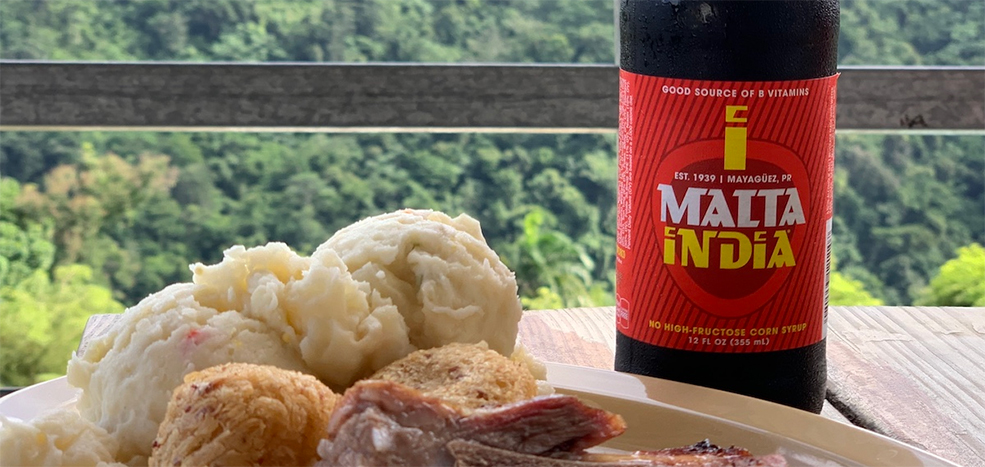
Malta (Puerto Rican Carbonated Drink)
Despite Malta having a smell and flavor that resembles beer, it won’t make you tipsy no matter how much you drink it. In America and America, Malta is mixed with condensed milk or evaporated milk to create a much creamier concoction to enjoy. You can grab a bottle of Malta from Puerto Rican street vendors or local stores.
Café Con Queso (Puerto Rican Cheese Coffee)
If you think coffee is normal in Puerto Rico, think again because Café con Queso will change your mind when Puerto Rican locals add cheese to their coffee.

Café Con Queso (Puerto Rican Cheese Coffee)
The coffee is grown in Puerto Rico, and locals will often grind the beans to a coarse powder to brew coffee. Cafe con Queso is a mix of strong espresso with chocolate, sugar, milk, and asiago or pecorino romano cheese.
The milk, cheese, and hot chocolate combination gives the coffee a unique creamy and nutty flavor. The hint of saltiness from the cheese will complement well with the overall flavor profile of the coffee.
Rums of Puerto Rico
For an island only 100 by 30 miles in size, numerous rum brands fill store shelves.

Rums of Puerto Rico
Besides the world-renowned Bacardi brand (originally from Cuba and now produced in Puerto Rico) many smaller brands compete for locals’ favor. Don Q, Barrilito, Palo Viejo, Ron Rico, Castillo and Llave are all locally produced and readily available. Most of these brands are available in white, spiced and reserve varieties.
Not Produced in Puerto Rico but Common on the Island
Pinch is a typical scotch whiskey well known in Puerto Rico. Licor 43, a sweet liqueur made of 43 secret ingredients, is often mixed with milk for a White Russian type drink.
You May Also Like
-

06 Jul 2022
Puerto Rico Videos -

07 May 2022
Best Family Friendly Activities -

30 Apr 2022
Best Hiking Trails in Puerto Rico -

29 Apr 2022
Food Trails and Culinary Adventures -

29 Apr 2022
Puerto Rican Cocktails & Drinks -

28 Apr 2022
Landmarks and Iconic Places -

27 Apr 2022
Puerto Rican Traditional Dishes -

26 Apr 2022
Events and Festivals in Puerto Rico -

25 Apr 2022
The Musical Sounds of the Island -

25 Apr 2022
Art Museums in Puerto Rico -

24 Apr 2022
Puerto Rico Natural Wonders -

17 Apr 2022
Best Beaches in Puerto Rico -

17 Apr 2022
The Best Spots for Watersports -

10 Feb 2022
Puerto Rico – Island of Enchantment -

01 May 2018
Where to Surf in Puerto Rico

